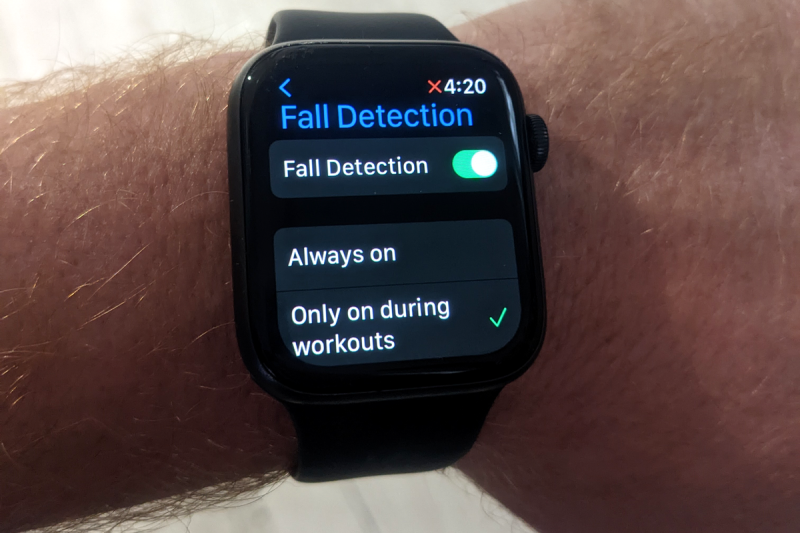
Apple has been busy adding new features to its smartphone and smartwatch offerings. Its new iPhone 14 and Apple Watch 8 now feature a safety system that contacts emergency services in the event the user is in a automobile accident.
As with so many new technologies though, the feature has fallen afoul of the law of unintended consequences. Reports are that the “crash detection system” is falsely triggering on rollercoasters and in other strange circumstances. Let’s take a look at how these systems work, and why this might be happening.
Can You Sense Something?
Smartphones are so much more than just telecommunications devices or pocket computers these days. They’re sophisticated sensor packages that we carry with us wherever we go. Top-tier models now pack in everything from advanced navigation chipsets to satellite communications hardware and even 3D scanners.

Across the board, though, virtually all modern smartphones feature some kind of accelerometer inside. The most obvious use for this device is to detect the orientation of the phone relative to gravity, in order to rotate the display to suit portrait or landscape mode as needed. They’re also commonly used for controlling games or as the basis for those popular lightsaber and “digital beer” apps of a decade ago. These sensors have become more sophisticated over time, and modern phones often feature three-axis accelerometers along with gyroscopes and even magnetometers inside.
Apple has now decided to leverage the iPhone’s suite of sensors for a more noble purpose, detecting if the user has been in an automobile accident. It follows on from Google’s Pixel line of hardware that has had a similar feature for several years now. The accelerometers can be used to determine if the user has been subjected to high acceleration, such as when hitting another car and coming to a sudden stop. Similarly, the GPS can provide data on sudden speed changes, too. Additionally, the microphones can be used to detect loud noises such as shattering glass if the phone is aware it’s in a driving situation. The phone’s on-board barometer can even detect a pressure spike of airbags going off in a car with the window’s closed.
But they also try to figure out if you’re in a car in the first place. They claim to be monitoring whether it sounds like you’re in a car, passing WiFi stations, and bound to a car’s Bluetooth.
When a crash is detected, the phones typically sound an alarm and display a prompt telling the user a crash has been detected. If the user doesn’t cancel the prompt after a short period of time, the phone automatically dials emergency services and can even notify contacts that the user has been in an accident.
The Real World

Overall, there’s a whole suite of features that can work together to detect accidents. However, as testing by the Wall Street Journal showed, the crash detection features in modern smartphones come with some caveats. In a series of test crashes executed in a junkyard environment, both iPhones and Pixel phones failed to trigger alerts. The problem was that without being paired to a car’s Bluetooth device, and without the GPS indicating the user was on a public road, the phones didn’t always register that they were in a driving environment. Thus, they weren’t in a mode where the crash detection system was enabled.
It’s obviously not great if a phone fails to detect a major crash. However, these features are new, and few of us are relying on them as critical safety devices. Even if they only work to detect some crashes, they’re still delivering a net good.
However, there’s also a problem with false positives, where a crash is detected where none has occurred. One iPhone owner reported his iPhone flying off the handlebars of his motorcycle on the highway. The rider was fine; it was just that the phone had detached itself from the bike. Unfortunately, this apparently triggered the phone’s crash detection system, which notified several contacts that the owner had been in a serious accident. Upon sourcing a replacement phone, the owner was greeted by panicked voicemails from family thinking he was severely injured.
Rollercoasters have also proven problematic. Emergency dispatchers are already dealing with repeat calls from such rides, with several incidents concerning the Kings Island amusement park in Ohio. The Dollywood theme park now has signs posted up warning that the severe accelerations experienced on the ride can trigger the emergency call function on Apple Watches and other smart devices.
The Phone That Cried “WOLF!”
It’s nice to think that our electronic devices are looking out for us. With smart devices that can call emergency services when someone is incapacitated, there’s real scope to save lives with such technology.
Of course, that can all be compromised if the technology is not reliable. Humans instinctively tend to ignore the boy that cried wolf, and a smartphone that cries “car crash!” on a rollercoaster is not that far removed.
The fact is that Apple’s new hardware is the subject of most current reports. Google’s Pixel phones haven’t been similarly indicted with these false positive results. Thus, it seems likely that the technology is fundamentally sound and workable. It just may need a little more work on Apple’s part.
[Banner Photo: “Lewin doesn’t have crash detection yet” by Lewin Day]
0 Commentaires